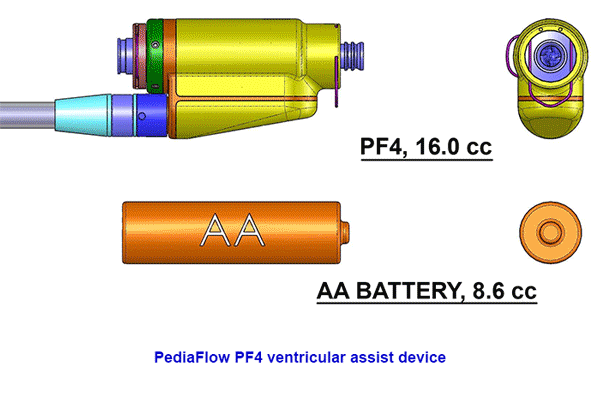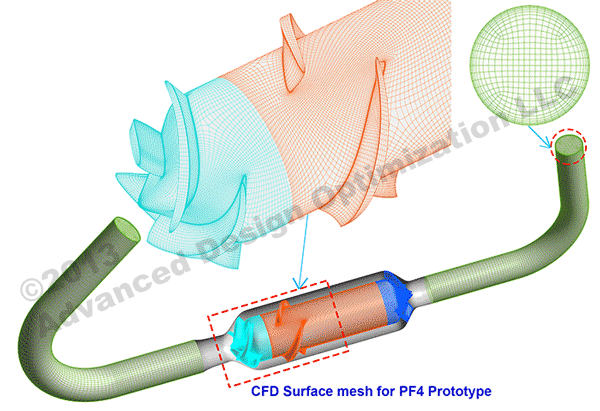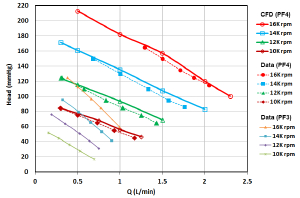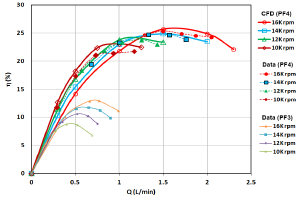
Advanced Design Optimization
CFD
All our CFD methods and accuracy have been well validated through numerous in-vitro and in-vivo testing for many implantable
adult and pediatric VAD blood pumps, industrial pumps, and hydro-turbines, etc. A typical example is the fourth generation (PF4) of
PedaiFlow® Pediatric Ventricular Assist Device (PVAD), developed and optimized using our CFD/FEA-based design optimization. It
is an implantable miniature magnetically-levitated turbo-dynamic pediatric ventricular assist device for infants and toddlers with
congenital and acquired heart disease. The PF4 shows exceptional hemodynamic performance and unparalleled biocompatibility as already
proven with a serial of in-vitro and in-vivo animal trials.


CFD predictions of head and efficiency characteristics of PF4 agreed remarkably well with the validation experimental data: with slight
overprediction of head by <7 mmHg over the entire operational range and a slight overprediction in best efficiency by ~1%. The
new optimized PF4 extended the maximum flow rate range of previous PF3 device by more than 100% to over 2.3 liter per minute (LPM)
for the same range of operating speeds, and doubled the maximum hydraulic efficiency to ~27%.


Comparison of CFD predicted h-Q results with the experimental data for PF4. Also superimposed are the experimental data for PF3.
Comparison of CFD predicted H-Q results with the experimental data for PF4. Also superimposed are the experimental data for PF3.
Turbulence is generally modeled by selecting different turbulence models based on Reynolds number and other flow conditions. In particular,
for VAD blood pumps, either k-w turbulence model or Sear Stress Transport (SST) turbulence model, which combines the standard k-e turbulence model to account for the bulk flow regime and the k-w model for the flow near wall surfaces, is usually prescribed
for the turbulent flow simulations. We can also perform more sophisticated turbulence modeling, such as Large Eddy Simulation (LES),
for customers.
For details about the accuracy of our CFD simulations and methods, please download here!



